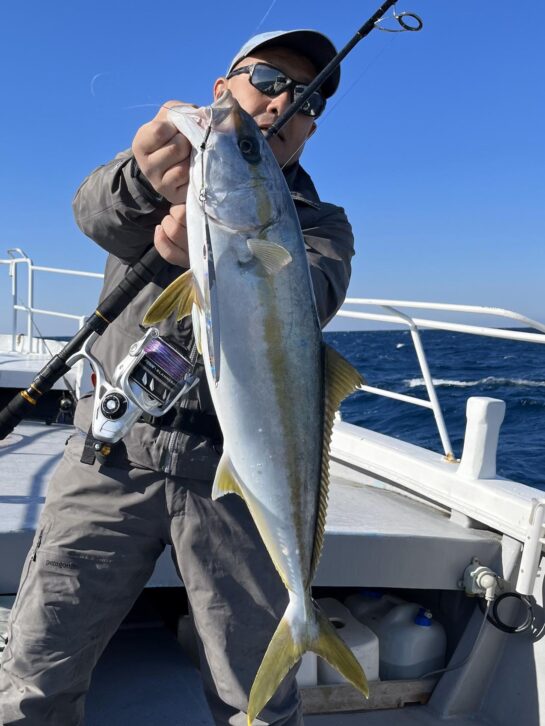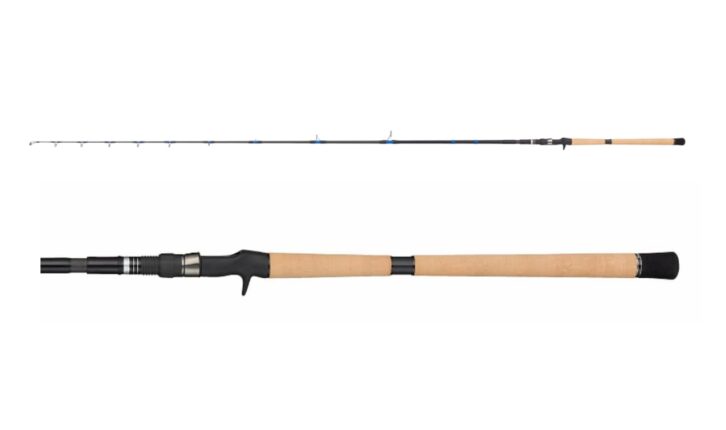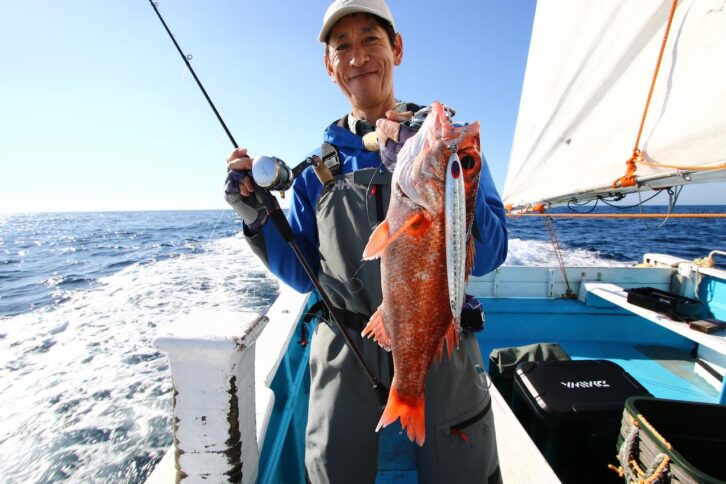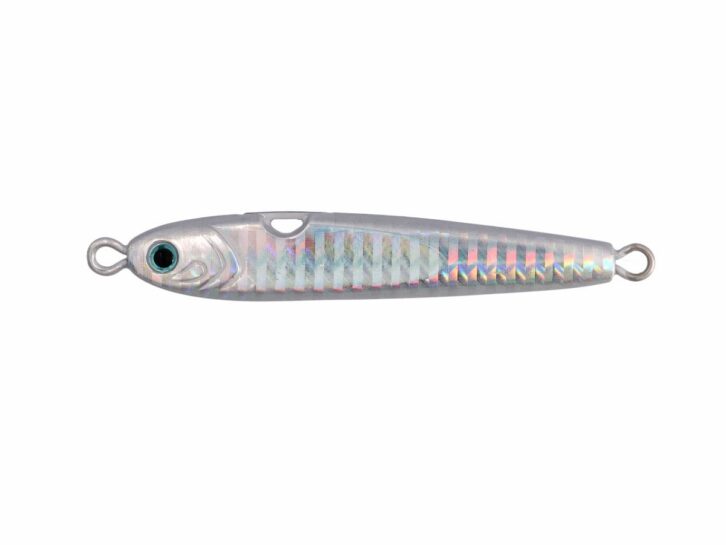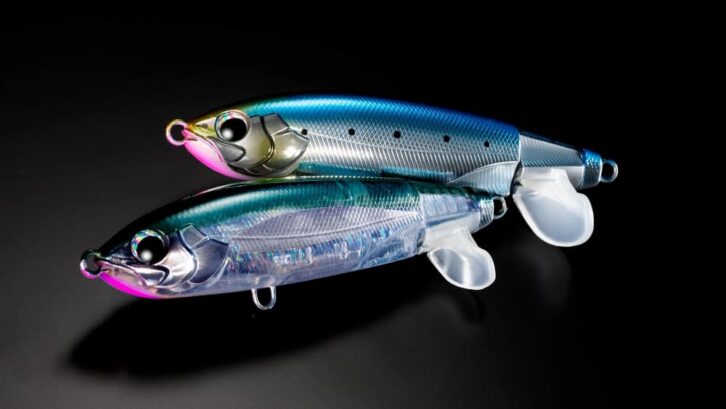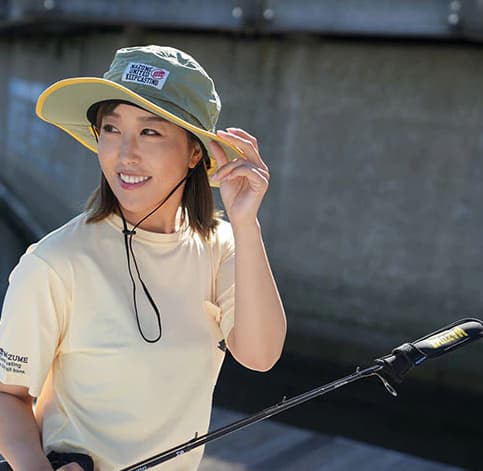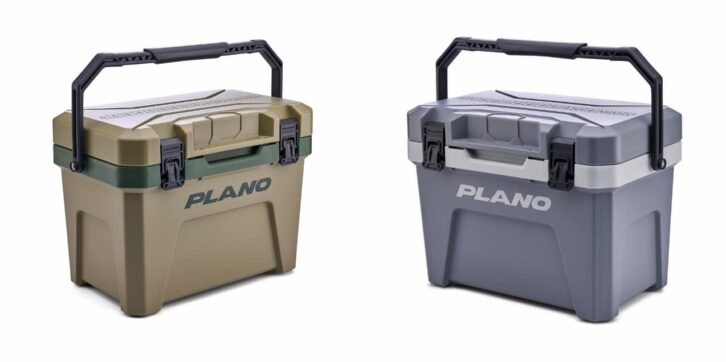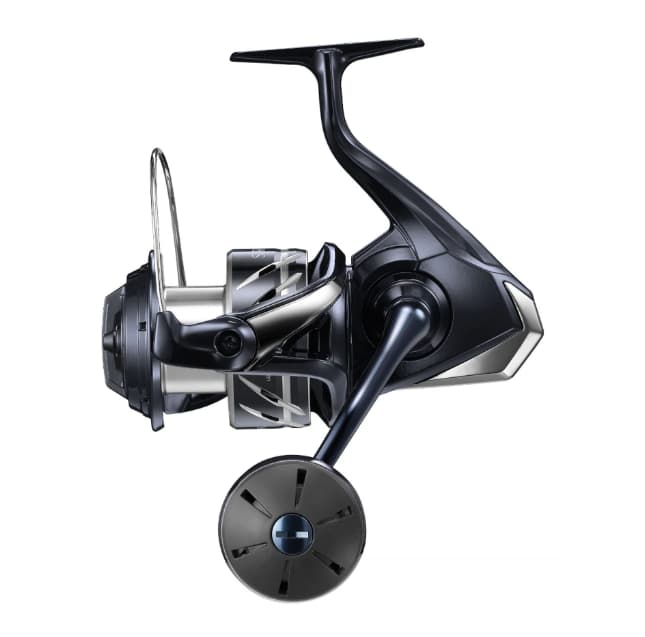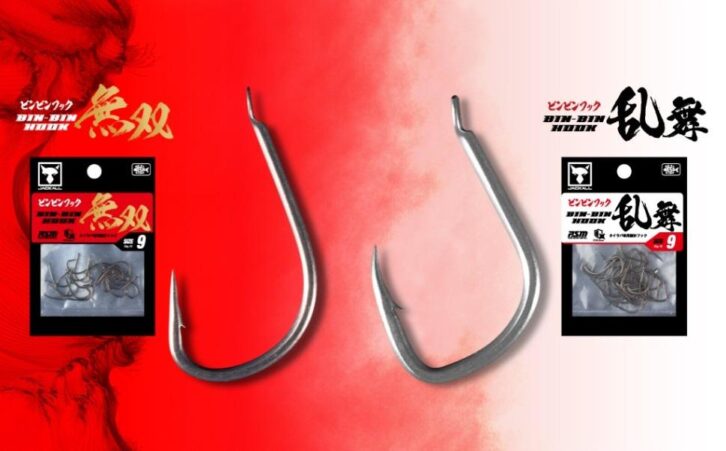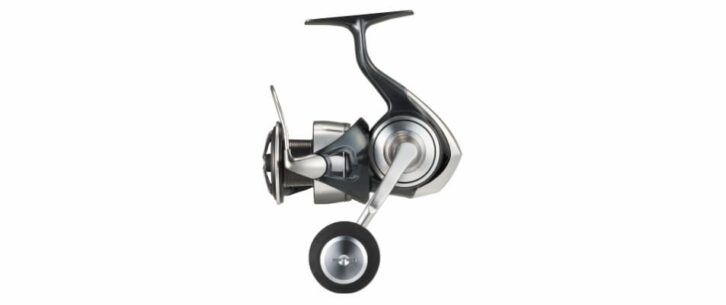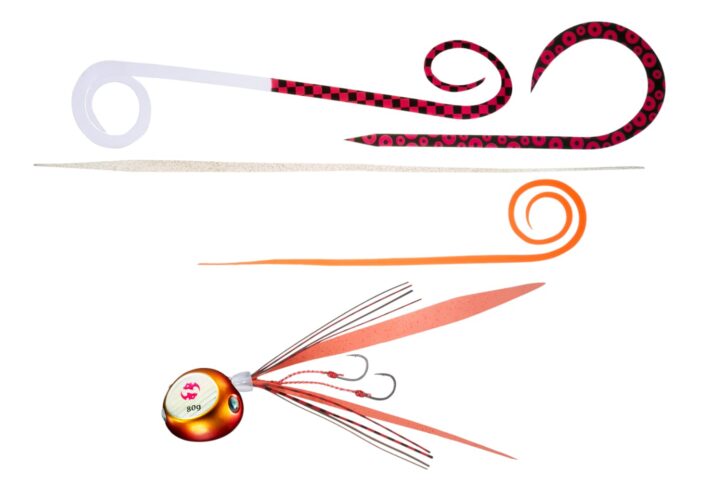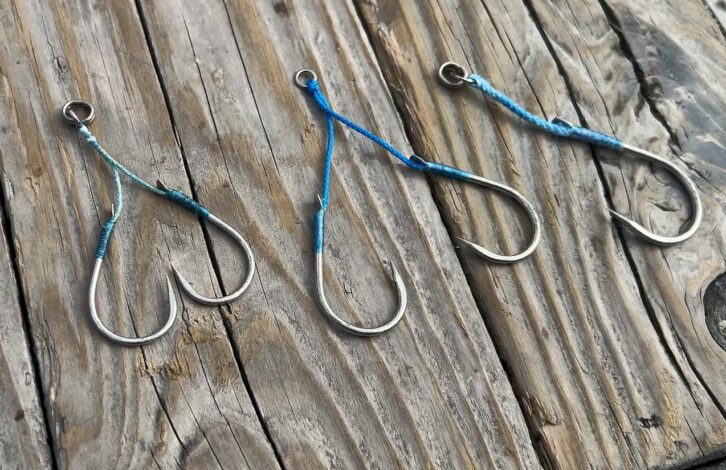2025, Spring Yellowtail Continues to Thrive
Conquer with TENRYU Spike & Dragg Force!
Yellowtail Tackle & Technique
When it comes to yellowtail fishing spots near Tokyo,the Ohara and Katsuura areas of Sotobo are the most popular.Anglers have been coming here for many years to catch large yellowtail,and even today, passionate anglers continue to challenge themselves here. The 2025 spring season for Sotobou Bay yellowtail is off to a strong start. This time, shortly after the season began, we joined Kazuhiro Matsubara, a field staff member of Tenryu and representative of lure manufacturer “MASHIO,” who has extensive experience in the Sotobou region, and Tenryu staff member Uwamori on their fishing trip. They provided insights into the tackle and techniques used for Sotobou yellowtail.
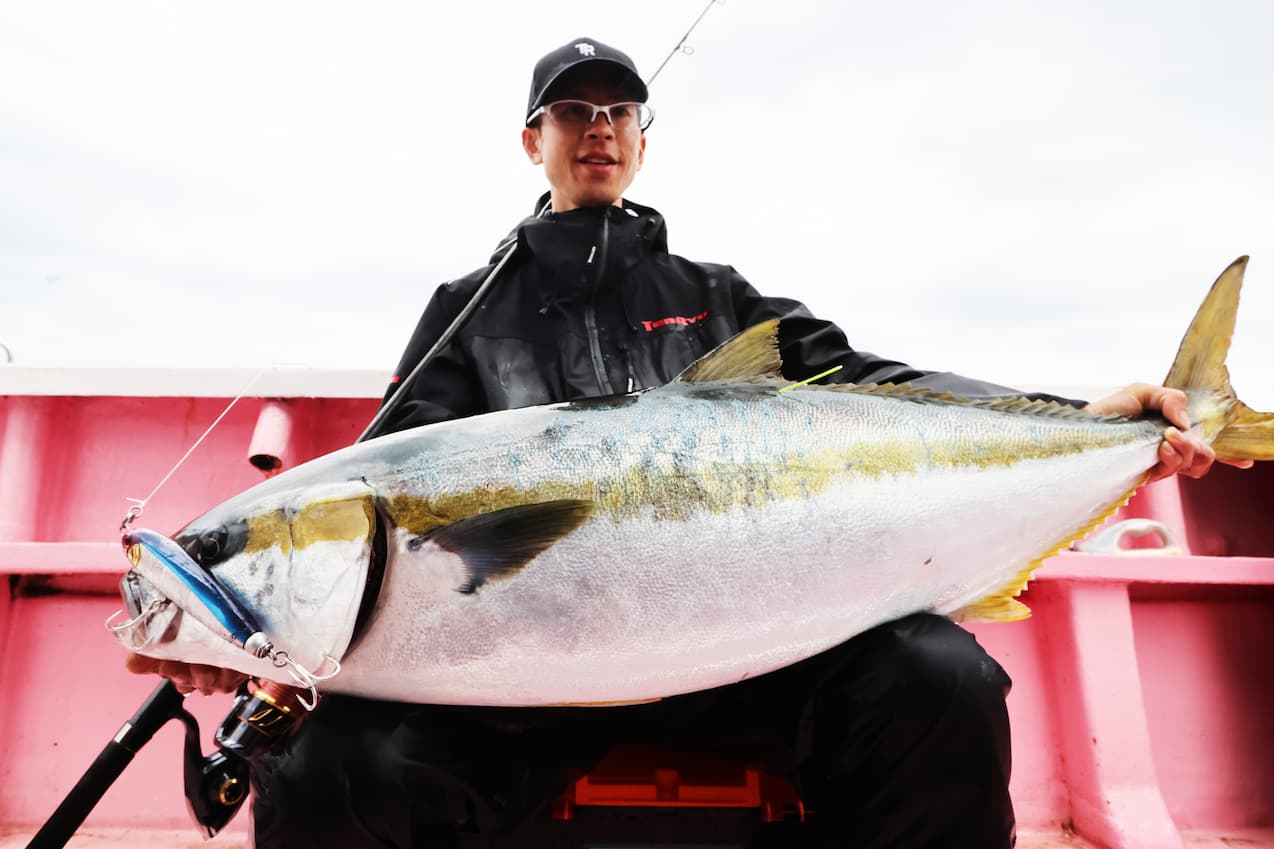
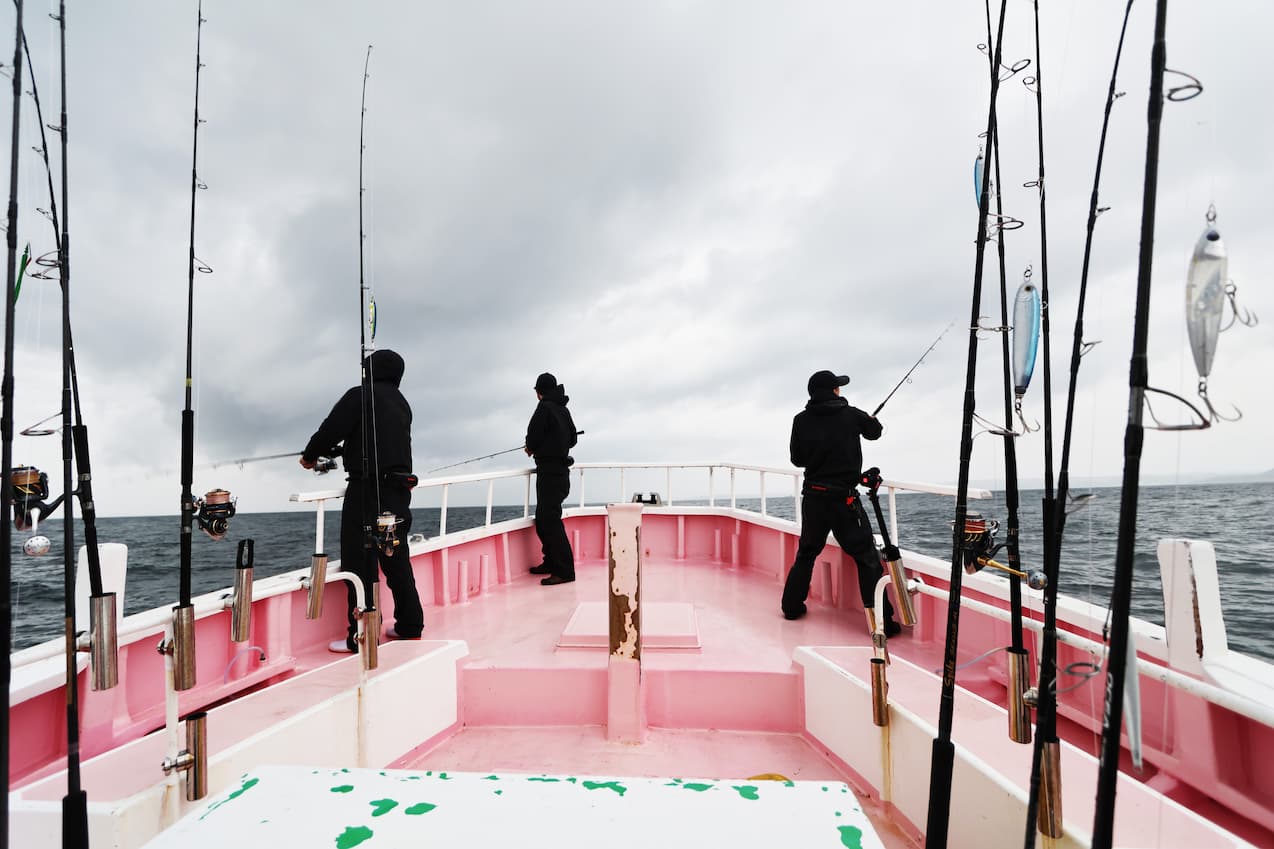
INDEX
- About the Oga Peninsula Yellowtail
- Spring Yellowtail Fishing
- Yellowtail Amberjack Spots
- Select tackle suited for the Sotobou region
- Matsubara’s Tackle Selection for Casting
- Jigging tackle is essential for conquering the Oga region
- Important points for tackling spots
- A yellowtail caught by reading the situation
About the Oga Peninsula Yellowtail
Yellowtail amberjack are popular offshore lure targets due to their powerful pull and large size. When it comes to yellowtail amberjack fishing in the Kanto region, the name Sotobou, where we fished this time, comes to mind first. Yellowtail amberjack fishing off the coast of Ohara and Katsuura has been popular for a long time, and in the past, a world record yellowtail amberjack measuring 170 cm in length and weighing 49.5 kg was caught in this area. Such a dream-like field has attracted many passionate anglers who have challenged themselves here, honing their skills and testing their limits. Matsubara Kazuhiro, who accompanied us on this fishing trip, is one such angler. To master yellowtail amberjack in this area, he developed his own jig. He frequently visits the charter boat Yamashoumaru, sometimes even assisting as a support staff member while offering advice to customers—a true master of his craft.
The yellowtail amberjack that migrate through the Sotobou area have two main seasons: spring and fall. Many anglers eagerly await the peak season for yellowtail amberjack. So, when is spring?
“Around May, you can start targeting yellowtail amberjack around 10 kg. While larger ones, such as 30 kg, can be caught before that, the stable fishing period typically begins around May. They enter the shallow waters of the Sotobou Peninsula around the spawning season” (Matsubara).
Incidentally, the good fishing period in spring often continues until late June. After that, in summer, they tend to be caught alone around the roots, and the next peak season is autumn. It is said that the pattern is that they start biting around October, but the movement of the fish varies from year to year depending on the movement of the bait.
“In autumn, typhoons often hit directly, marking the start of the season. They also chase large bait like bonito and mackerel, making it a period when large fish are caught.”
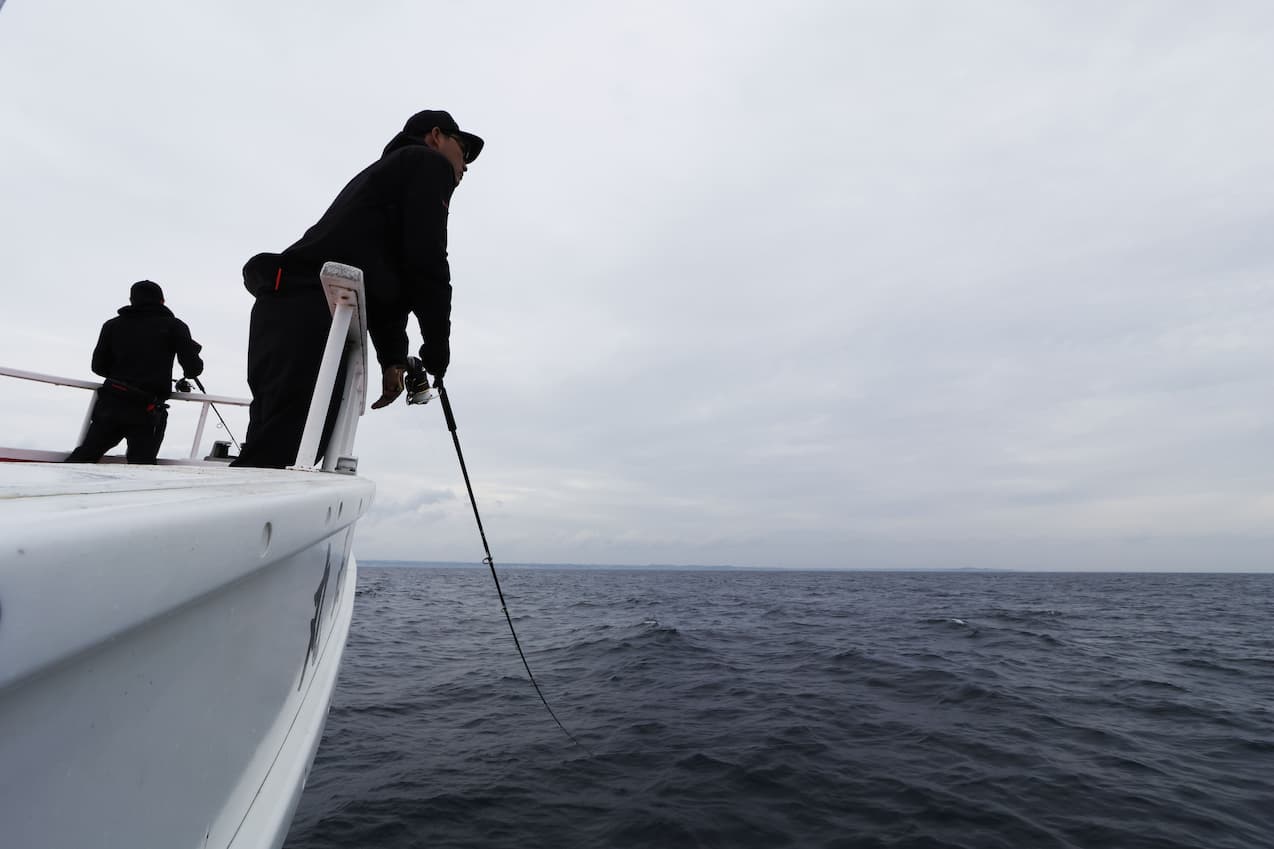
Spring Yellowtail Fishing
This fishing trip took place at the end of April, which was the best timing. On this day, Mr. Matsubara and Mr. Uwamori from Tenryu boarded the Yamashoumaru at Ohara Port early in the morning. Boats from Ohara and Katsuura depart in the morning and afternoon, and the two planned to board both morning and afternoon trips. Incidentally, in the Sotobou region, mornings are often not good, but afternoons are often good. Of course, the opposite is also true. For that reason, if you have the time and budget, I recommend boarding both the morning and afternoon trips.
Now, regarding the two anglers’ catches from this fishing trip, in the morning, Mr. Uwamori landed a 12kg yellowtail amberjack using casting. In an area with scattered reefs within a wide zone, there were schools of 2kg yellowtail amberjack, with larger ones mixed in. He successfully landed a fine specimen. Later, he caught a smaller yellowtail amberjack using jigging. Mr. Matsubara had several close calls, but was unable to hook or land the fish, leaving him hopeful for the afternoon outing. However, based on the morning’s sea conditions, the fish were active, and it felt like a good-sized fish could strike at any moment.
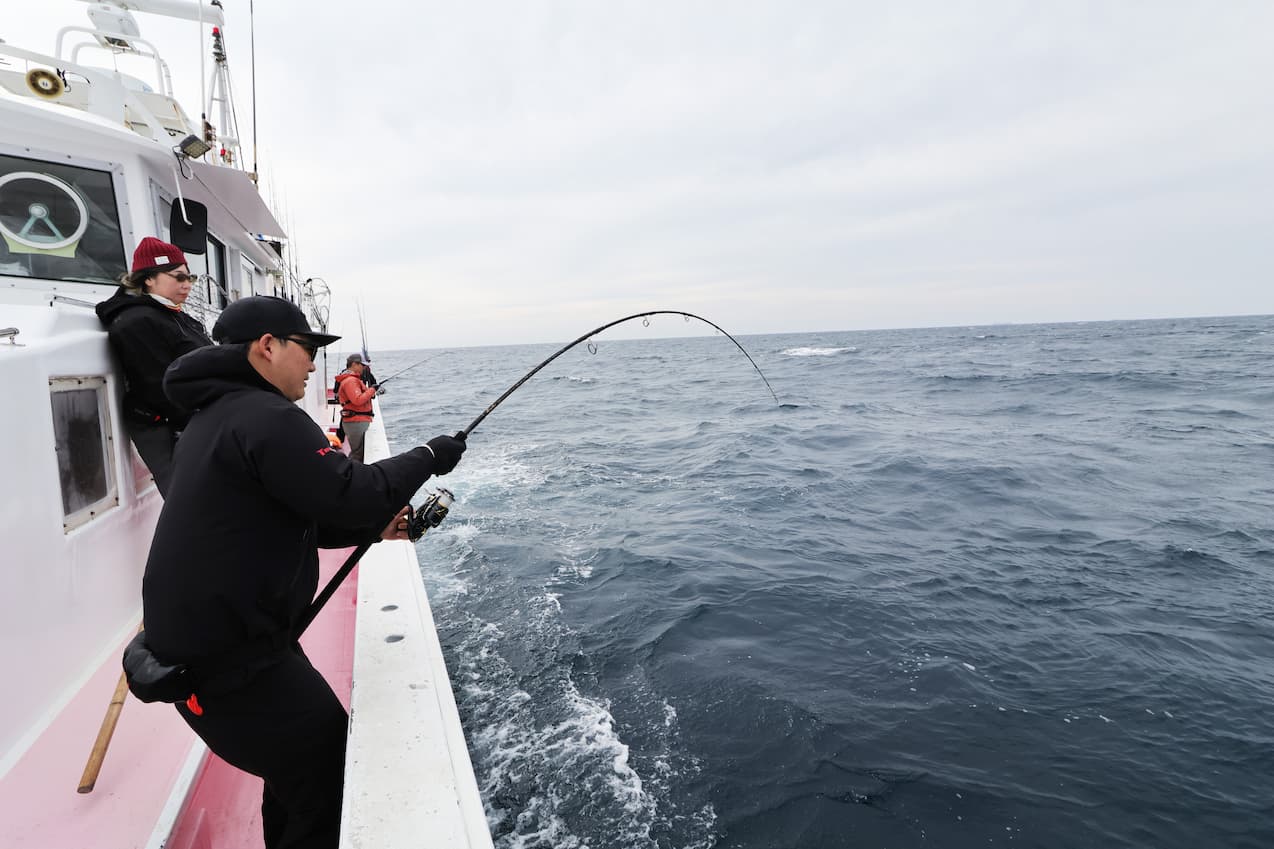

The 12kg yellowtail caught by Uwamori. Tackle: TENRYU Spike SK822S-MH, reel: Stella SW14000XG, line: PE5 + nylon 100lb (2.5 Hiro), lure: Rapid 160 (50g including hook).

This is the catch from jigging. On that day, this size was common. The rod used was the TENRYU Jig Sam Drag Force JDF601S-5/6. PE4 + fluorocarbon 14/56lb (3.5 Hiro). The jig was MASHIO/Nano-hana 130g.
In the afternoon, the wind began to pick up, and it started to drizzle, but such weather often brings more opportunities. In fact, the fish’s activity increased further. A school of young yellowfin tuna was spotted, with amberjack mixed among them. In such conditions, Matsubara carefully read the fish’s movements, hooked a large amberjack, and brought it to the boat. Upon measurement, it was a 14kg amberjack with a fork length of 102cm and a total length of 110cm.
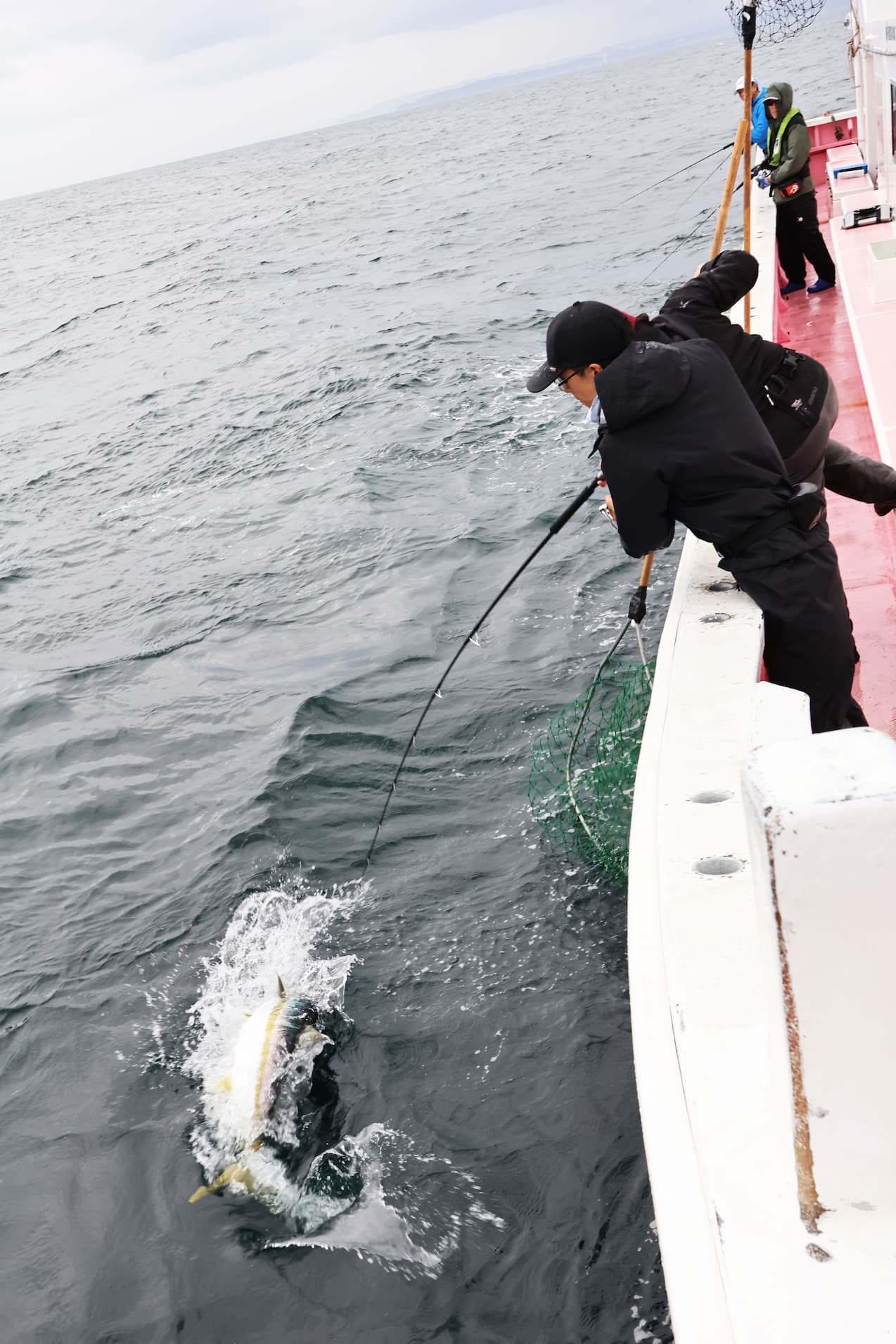
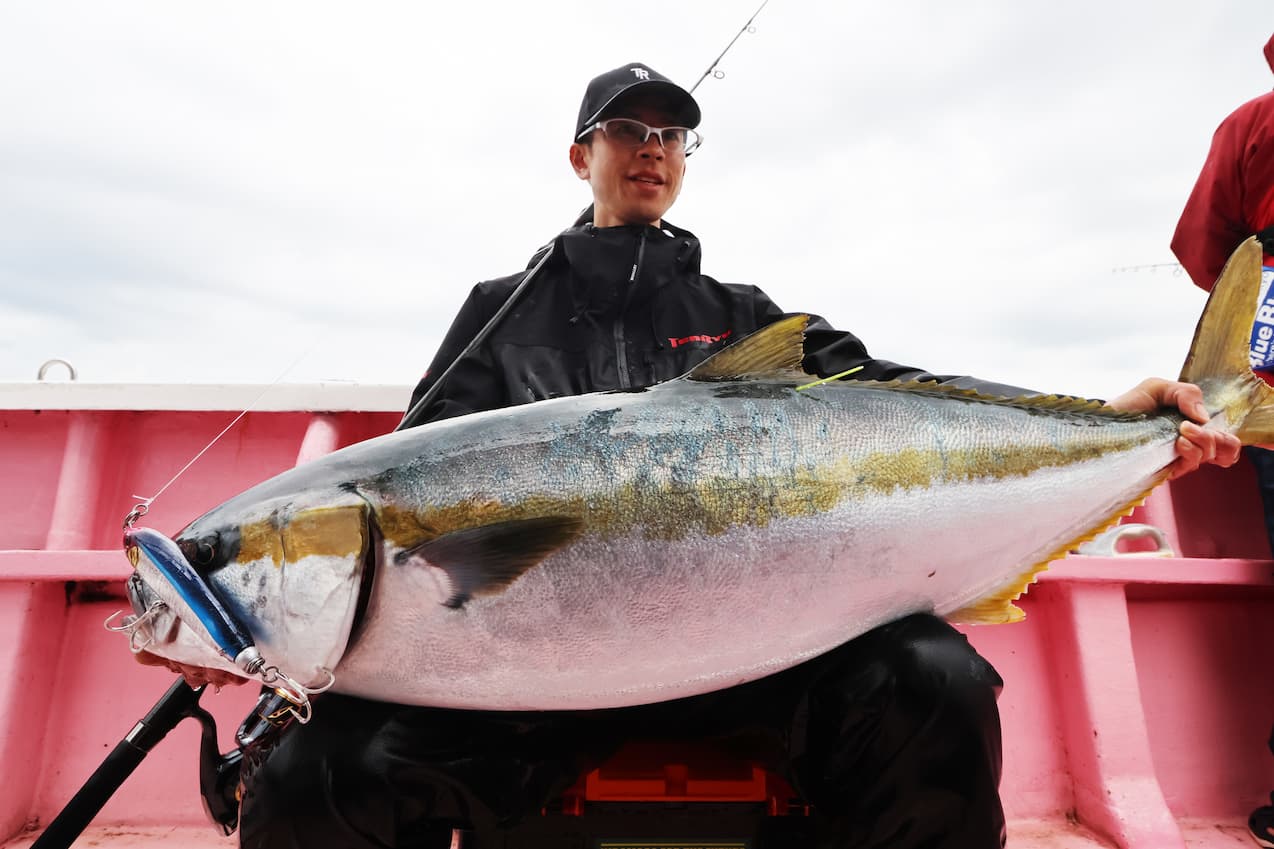
Yellowtail Amberjack Spots
The main spots for yellowtail amberjack in this area are around shallow-water reefs. The water depth is 20–30 meters, with the reefs reaching about 15 meters in height. There are two patterns for finding spots: searching a wide area for reefs or focusing on reefs where the tide is hitting. Additionally, there are spots with water depths of 30–40 meters or more offshore. Such spots are explored using casting and jigging techniques.
“Whether to use jigging or casting depends on the spot. This can be challenging without knowing the spot well, but in areas with smaller yellowtail amberjack, we primarily use jigging. However, even in such areas, if the fishing position is at the bow or stern of the boat, we may focus on casting. This is because plugs have a higher chance of catching larger fish. When the fishing spot is in the middle of the boat, plugs alone aren’t enough, so we add jigs depending on the situation.”
In this area, charter boats alternate between downwind and upwind sides when positioning the boat at the fishing spot to ensure equal fishing spots for passengers. On the downwind side, casting is used, and on the upwind side, jigging is used. However, even on the downwind side, we often achieve better results by not limiting ourselves to casting alone, but also casting jigs and retrieving them diagonally to search the area.
“As the boat moves forward, we continuously cast jigs to target the fish. This approach allows us to hook fish that might not be caught solely through casting.”
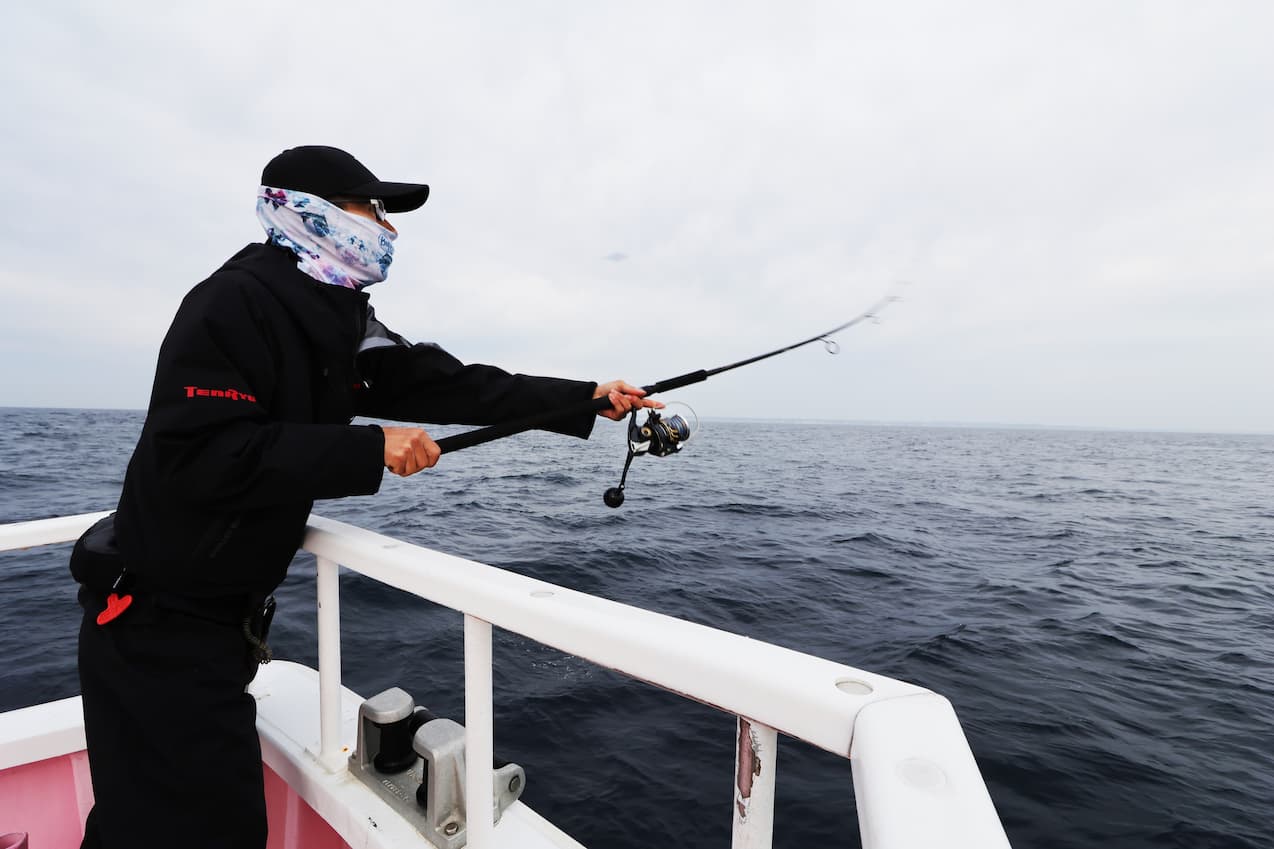
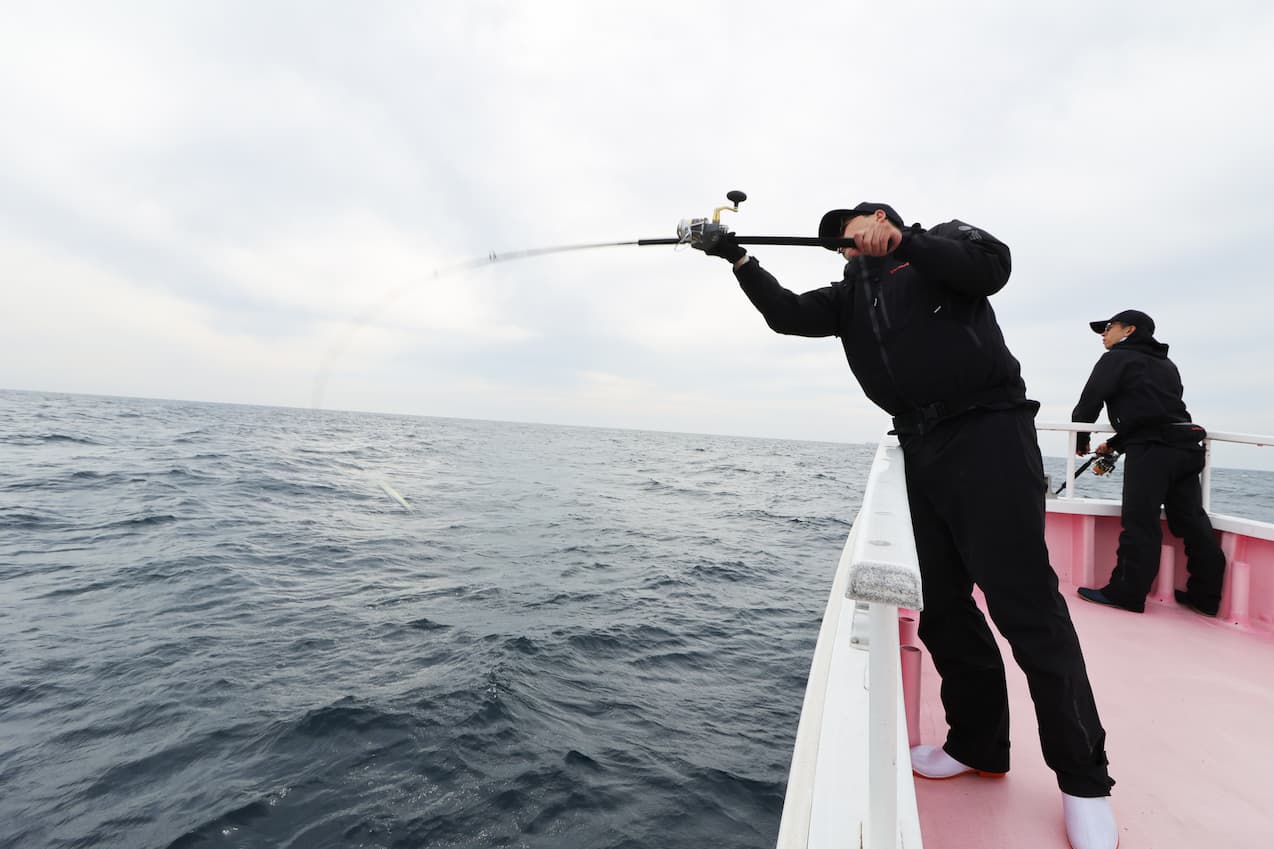
The fishing spot is around shallow-water reefs. We probe with plugs and occasionally cast jigs to search.
Select tackle suited for the Sotobou region
Yellowtail amberjack are found in various locations. However, the approach to fishing them is not the same everywhere. This is because the bait, points, and fishing methods vary depending on the field. Especially in the Sotobou region, it is important to choose tackle suited to the area. In many popular yellowtail amberjack casting fields, anglers cast plugs with an overhand cast. However, in the Sotobou area, there are many anglers on the same boat, and fishing is done on both sides of the boat. Therefore, to avoid trouble, undercasting is the basic approach. Additionally, except during the autumn when large bait is present, smaller plugs have a higher hit rate.
“Regarding casting, I primarily select PE5 line with a 90lb or 100lb leader, not only when targeting spring yellowtail amberjack weighing around 10kg or 15kg, but in all situations. The reason is to maximize casting distance.”
Mr. Matsubara often assists on charter boats, where he typically fishes in open areas. In most cases, this is the center of the boat. While the bow or stern allow for underhand casting with ample backspace, casting from the midsection with thick line makes it difficult to achieve distance. Without sufficient distance, it’s hard to compete with other anglers. That’s why I use 5-pound test.
“When I want to use smaller lures or achieve greater casting distance, I sometimes select a 4-pound PE tackle. Additionally, during the autumn season when bait is larger, and I use larger lures, I sometimes select a 6-pound PE tackle.”
By the way, the size of plugs in the Sotobou region is mainly 15–18 cm year-round. This is not only because it’s easy to cast with an underhand cast, but also because fish respond well to this size. Even during the fall when bait is larger, 19 cm lures are often used. Considering underhand casting, lures up to about 100 g are used. In other yellowtail fields, larger lures over 20 cm are often used, but in the Sotobou region, that size is too large to be effective.
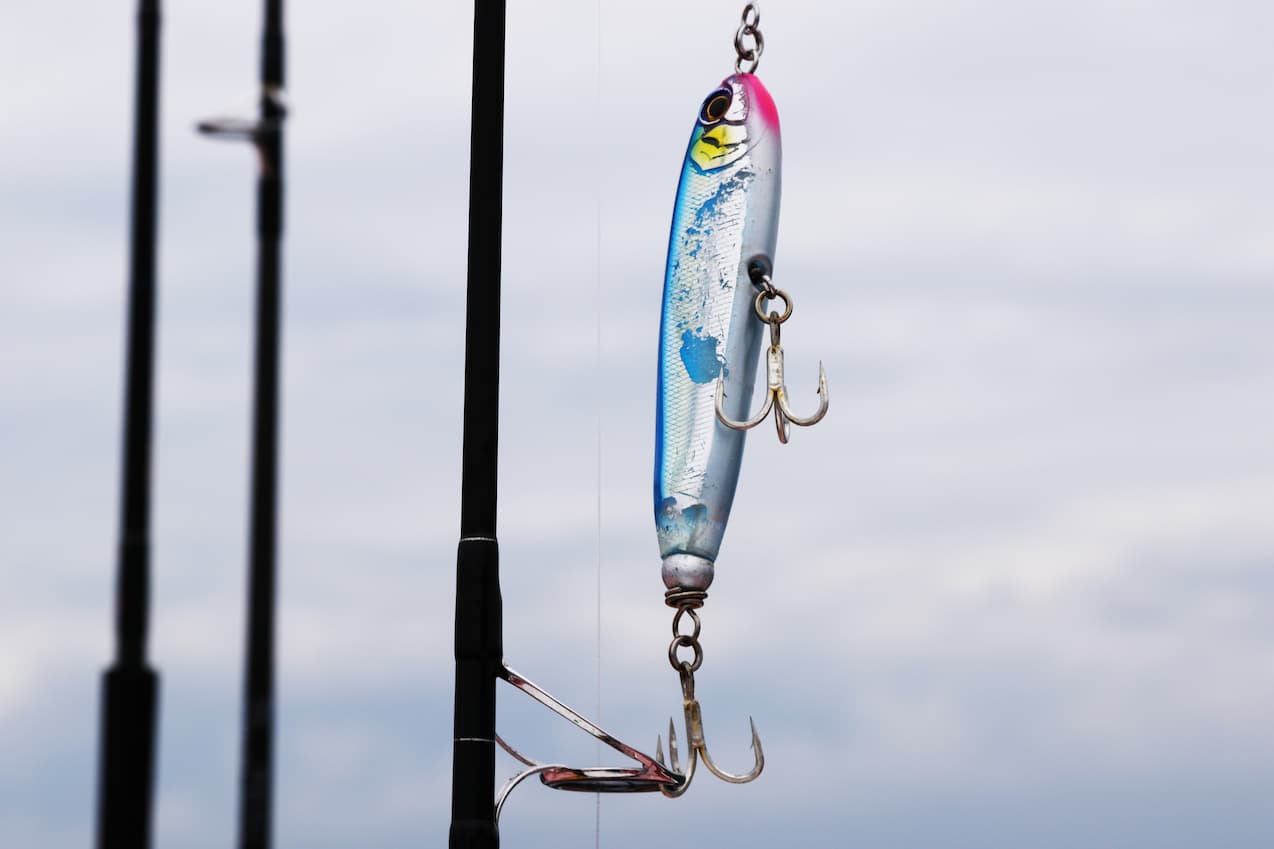
The photo shows the lure that caught Matsubara’s 14kg yellowtail. It is a MASHIO prototype plug 150mm. It weighs 70g including the hook.
Matsubara’s Tackle Selection for Casting
For the reasons mentioned above, Matsubara prepared three casting tackle sets for this trip. The main tackle used was a PE5-class setup, featuring a TENRYU Spike 8ft prototype MH-class rod, a Stella SW14000XG reel, and PE5-class line paired with 80lb nylon (2.5 Hiro). This was paired with the MASHIO/Pencil Bait 150mm prototype (approximately 70g including the hook).
“This time, I used the 8ft prototype with PE5 as the main tackle, but normally I use the Spike SK822S-MH model as the main tackle. It is a model that can handle medium to large yellowtail. It is a model with a soft tip to reduce lure misdives. By the way, this prototype model has a slightly stiffer overall feel compared to the 822MH. While the soft tip offers good lure maneuverability, when casting plugs against headwinds or crosswinds, I felt the need for a rod with a bit more stiffness, so I communicated this to the Tenryu side and had them create and test it. While lure operation is more manual compared to the 822MH, it allows for a crisp cast. When I hooked a yellowtail this time, I felt it was quite powerful.”
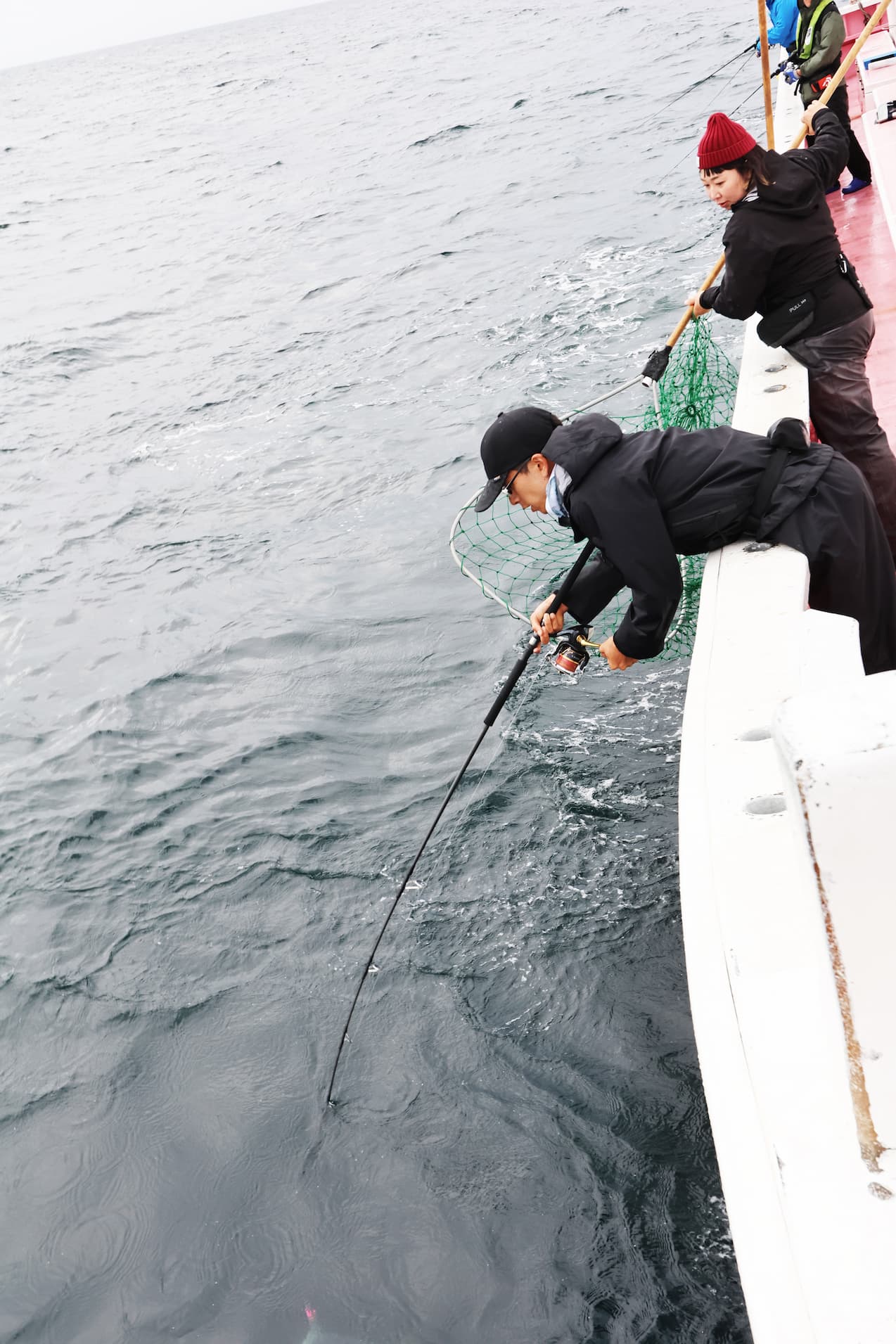
Matsubara reeling in with the prototype Spike. Whether it will be commercialized is still undecided, but it seems like a model that could perform well in various regions.

The photo shows the Spike SK822S-MH, which Matsubara primarily uses in the Sotobou region. It is a model with a PE line capacity of up to 5-pound test and a lure weight capacity of up to 100 grams.
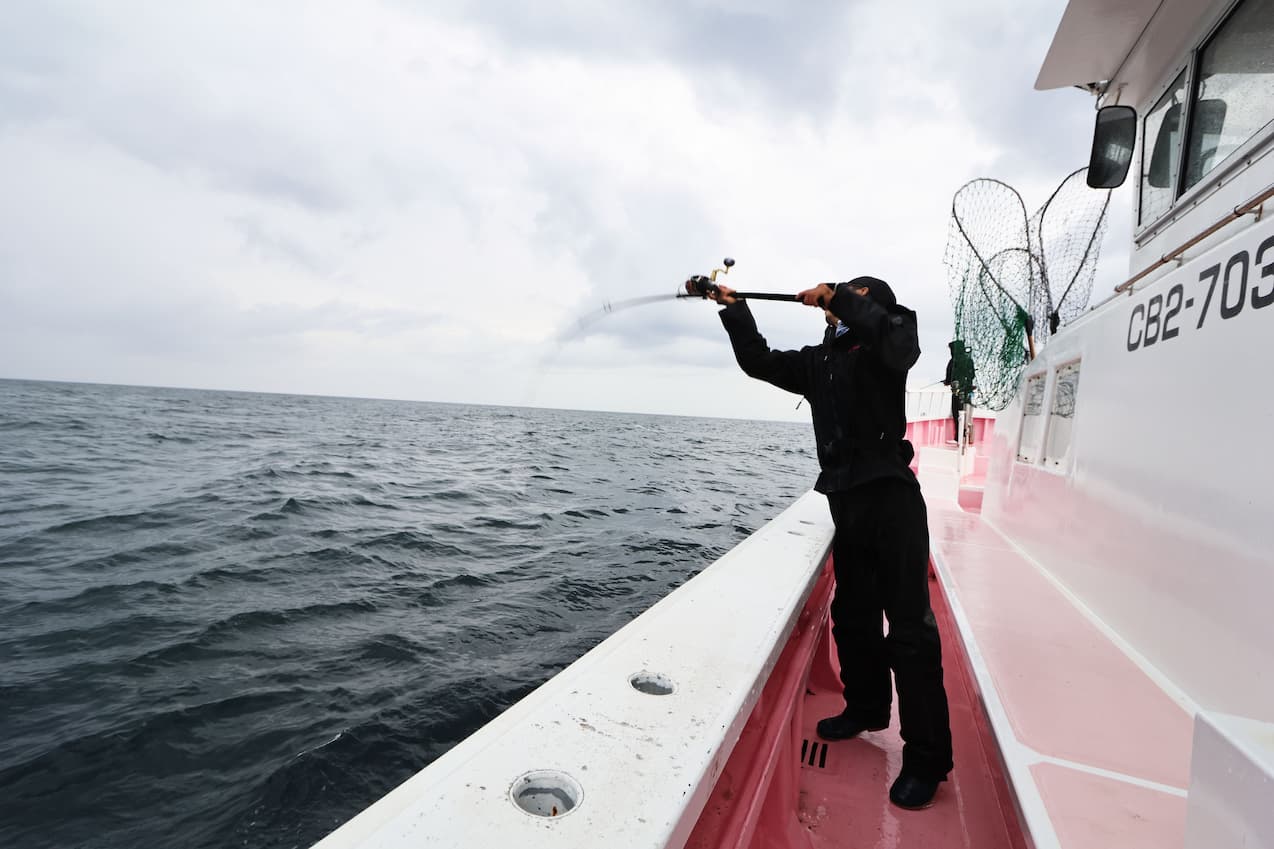
In the Sotobou region, fishing trips are often done on shared boats. The fishing seat is sometimes in the middle of the boat, so an underhand cast is required to achieve a certain distance. To maximize casting distance and increase opportunities, use PE 5 and select a lure size that can be cast underhand. The ability to cast underhand for long distances can only be mastered through practice.
In addition to the 5-pound tackle, we also prepared a rod (TENRYU Spike SK842S-MLM) and reel (Stella SW8000HG) for tackling smaller plugs, along with PE 4-pound + nylon 80lb (2.5 Hiro).
“This tackle features a regular first taper, allowing you to cast lures far with minimal effort. The 842S-MLM has a good feel when casting. It is suitable for casting lures around 15cm using PE4. In the Sotobou region, there are times when you need to cast smaller lures, such as 13cm ones, or smaller sinking pencils, but this rod can still cast them far, making it a valuable tool.”

The 842S-MLM is a new model added to the lineup in 2025. It can cast plugs weighing 30 to 60 grams and can handle full casts of 80-gram plugs. It is suitable for use with PE 4 line.
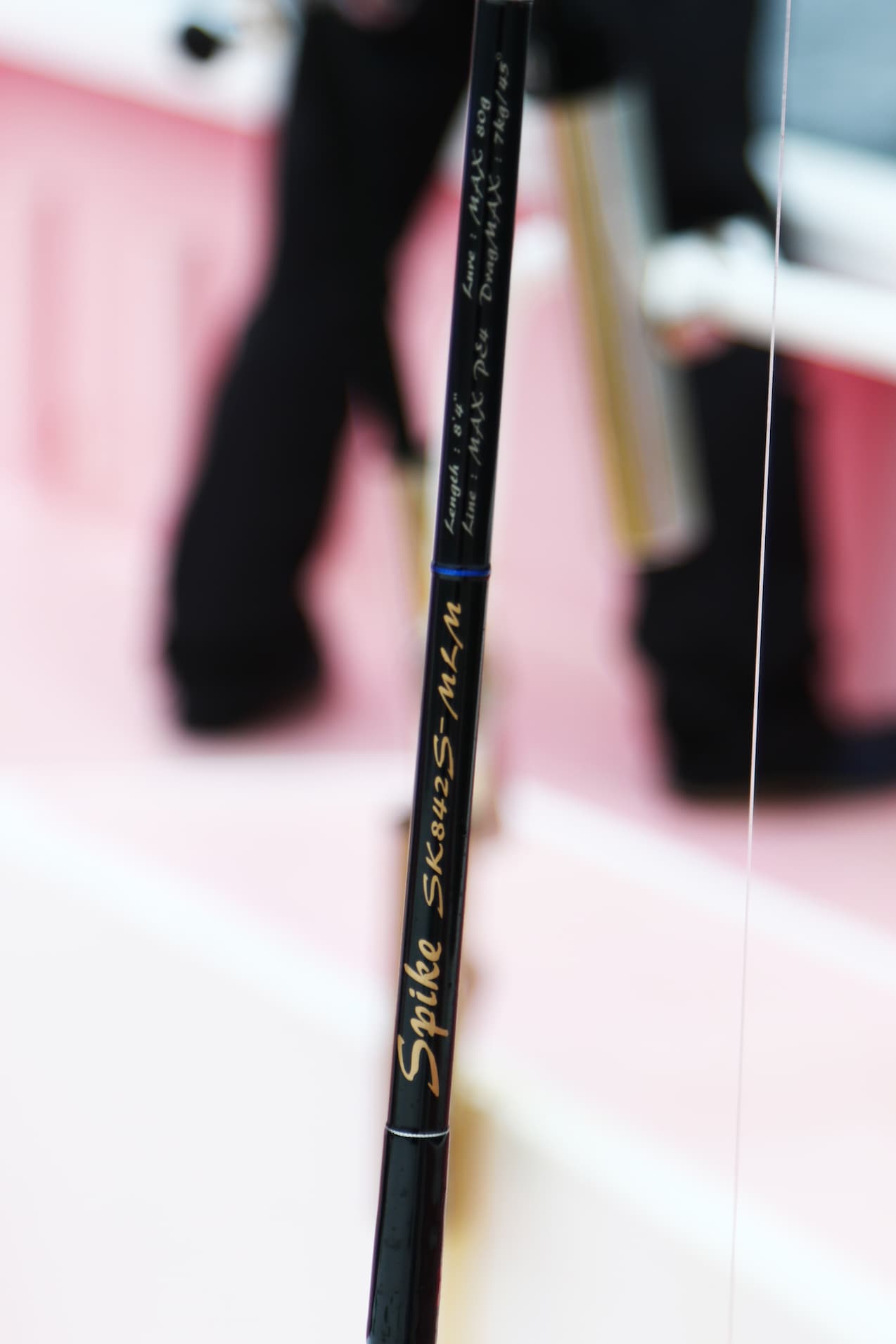
Although it is said that there are few opportunities to use it in the spring Sotobou area, we also prepared a PE6 tackle setup. This consists of the TENRYU Spike SK822S-H rod, Stella SW14000XG reel, and PE6 line + nylon 100lb (2.5 Hiro) line.
“The 822S-H is easy to use with PE6 line and lures weighing around 90g. The lure size is about 19cm. However, it’s tough to keep casting for a long time with an underhand cast, so I use it in areas where large fish are likely to appear. If you can overhand cast, I think it’s a rod that’s easy to handle. You can make long casts without exerting force, as it bends firmly from the blank.”

The SK822S-H is used by Matsubara when casting lures around 19cm with PE6 line. In the Oga region, where undercasting is common, the PE6 tackle setup is rarely used due to distance limitations, but it is employed for large yellowtail amberjack and large baitfish patterns. As this model can handle PE8 line and plugs up to 150g, it shines in fields where overcasting is possible.
Incidentally, the Spike series used by Mr. Matsubara and Mr. Uwamori is designed to achieve excellent casting distance and performance, allowing for smooth and continuous casting. The butt section features TENRYU’s proprietary carbon nanotube material “C·N·T.” providing durability and resilience after a hit.
TENRYU Spike
https://fishing.tenryu-magna.com/offshore/spike.html
Jigging tackle is essential for conquering the Oga region
In the Sotobou region, the key difference from other areas lies in the distinction between jigging and casting, as mentioned earlier. In other areas, casting alone may suffice, but in the Sotobou region, jigging must be used in conjunction with casting to effectively target the fish. So, what jigging tackle does Matsubara choose?
“In spring, when targeting yellowtail amberjack, I often search wide areas with scattered reefs at depths of 20–30 meters. In such locations, I cast the jig to cover a broad area.
“Most individuals weigh around 2 kg, but larger ones also appear. When searching such areas with jigs, I use the TENRYU Jig Sam Drag Force JDF601S-5/6, Stella SW8000HG, and line E3 + fluorocarbon 12 (4 Hiro). The jigs I primarily use are MASHIO’s ‘Nana no Hana’ 130g and 150g.”
The Drag Force JDF601S-5/6 is a stiffer model suited for the 130g and 150g jigs I use. The reason for this selection is primarily for casting the jig. To increase hit opportunities, I cast the jig to cover a wider area, but a softer rod causes the tip to wobble, making line tangles more likely. Additionally, it allows for more precise jig movement. With a soft rod, the jig’s movement can be absorbed and moved naturally, but to move it firmly, you need to move your body significantly, which can be physically demanding. However, with a stiff rod with good tension, you can move the jig swiftly by simply moving the rod tip lightly, which is another reason for this selection.
“By the way, the Drag Force JDF601S-5/6 is not only stiff but also has a resilient, flexible performance. Therefore, it suppresses unnecessary jig movement that often occurs during jerks with a stiff rod.”
In the case of the Sotobou region, considering casting the jig and operating on the side where the line enters under the boat due to the current, the captain of the Yamashoumaru also recommends a certain length for easier handling. The recommended length is between 6 feet and 6.5 feet.
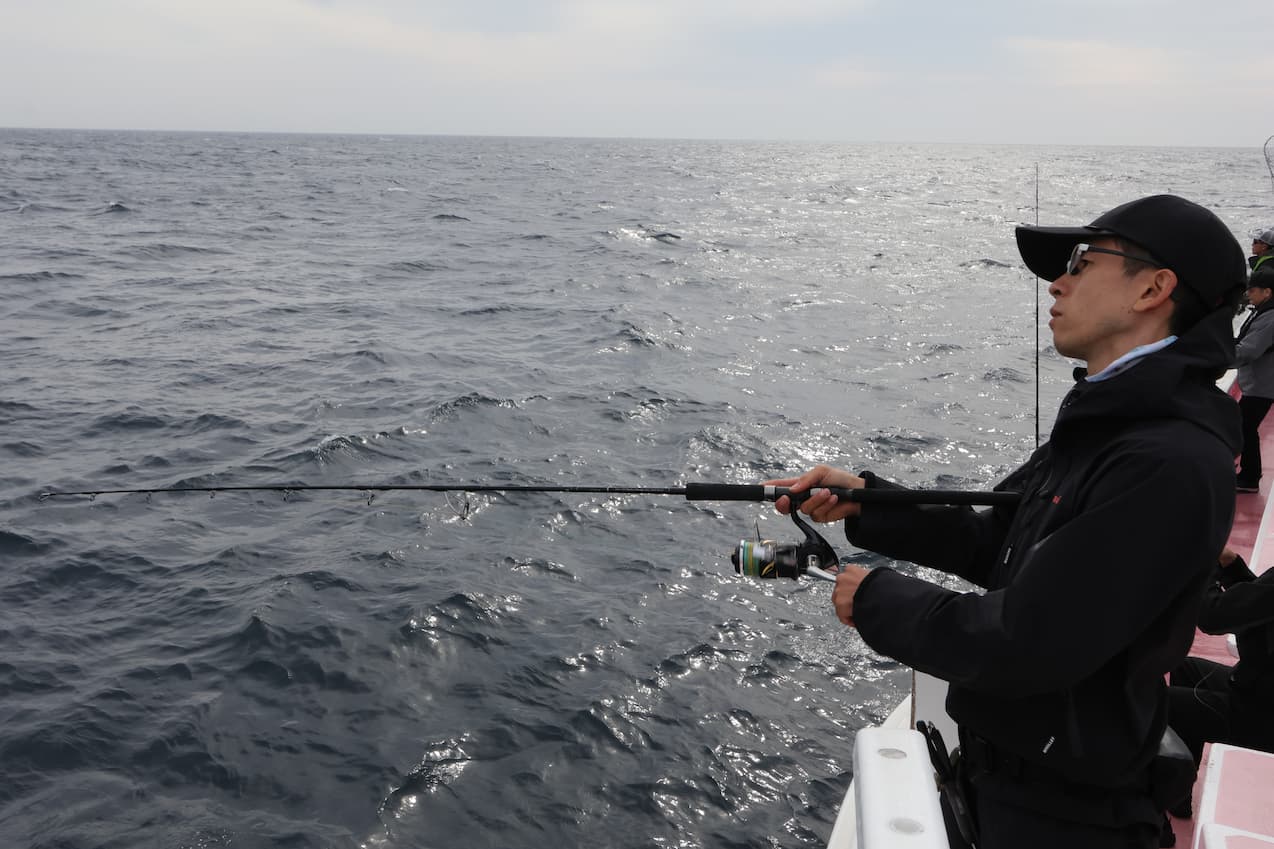
The main jigs used are 130g and 150g, but it is advisable to prepare a few lighter, smaller ones and heavier ones as well to accommodate various situations.
When asked about how to move the jig, Matsubara explained that the basic technique is to cast the jig and then perform a reel jerk. Rather than a jerk that sends the jig flying, he uses a jig action that involves reeling while adding action with the tip to make the jig swim, thereby enticing the fish. And the Drag Force JDF601S-5/6, which Matsubara-san uses, was developed with such jig action in mind.
TENRYU Jigzam Drag Force
https://fishing.tenryu-magna.com/offshore/jig-zam_draggforce.html
Important points for tackling spots
What is important when tackling the shallow reefs of the Sotobou Peninsula? As with any field, it is important to read the field. How do you grasp the spots? It is by observing with your eyes and listening carefully to the captain’s announcements.
First, regarding observation. This means observing the movement of the tide and the fish. Amberjack tend to gather around the roots in areas where the tide is moving. When the tide hits roots with significant elevation changes, changes appear on the water surface. Identify that location and pass through it with both plugs and jigs.
“Check the high points of the reef by observing the waves. Within that area, observe whether the fish are on the upstream side, on top of the reef, or behind the reef. Even if you cannot observe where the fish are, it is important to be aware of the high points of the reef while enticing them.”
In a wider area with reefs that have little elevation, it can be difficult to confirm their location from the boat. In such cases, it is important to listen carefully to the captain’s announcements. While listening to the water depth announcements, observe which side the boat is drifting toward, when it will pass over the top of the reef, how the captain is positioning the boat at the fishing spot, how he is drifting it, and where he expects the fish to strike. It is important for anglers to observe and understand the captain’s strategy and adjust their approach accordingly.
“Even at points where large fish are caught by casting, once the water depth exceeds 30m or 40m after passing the reef, I judge that fish are unlikely to surface and switch to using a jig. Such timing can be understood by carefully listening to the captain’s announcements.”
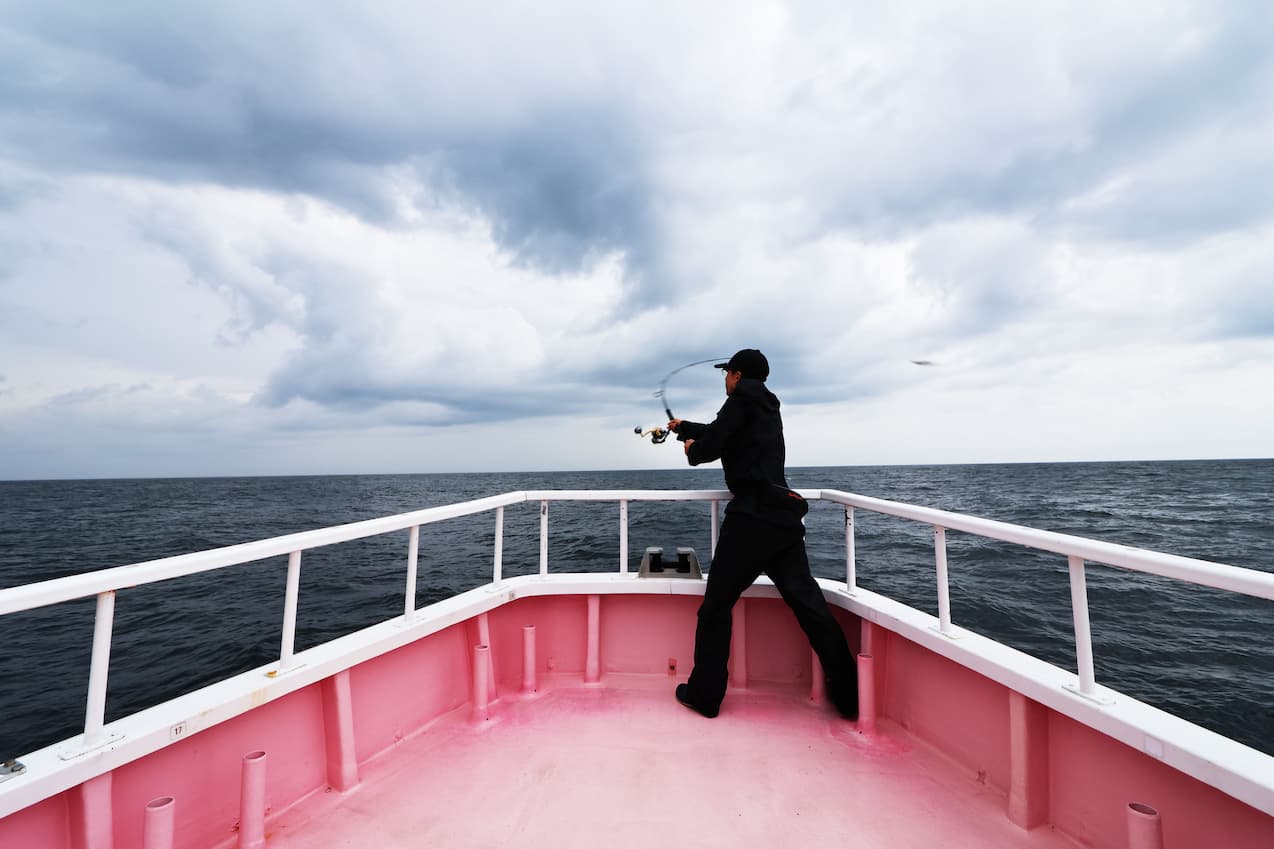
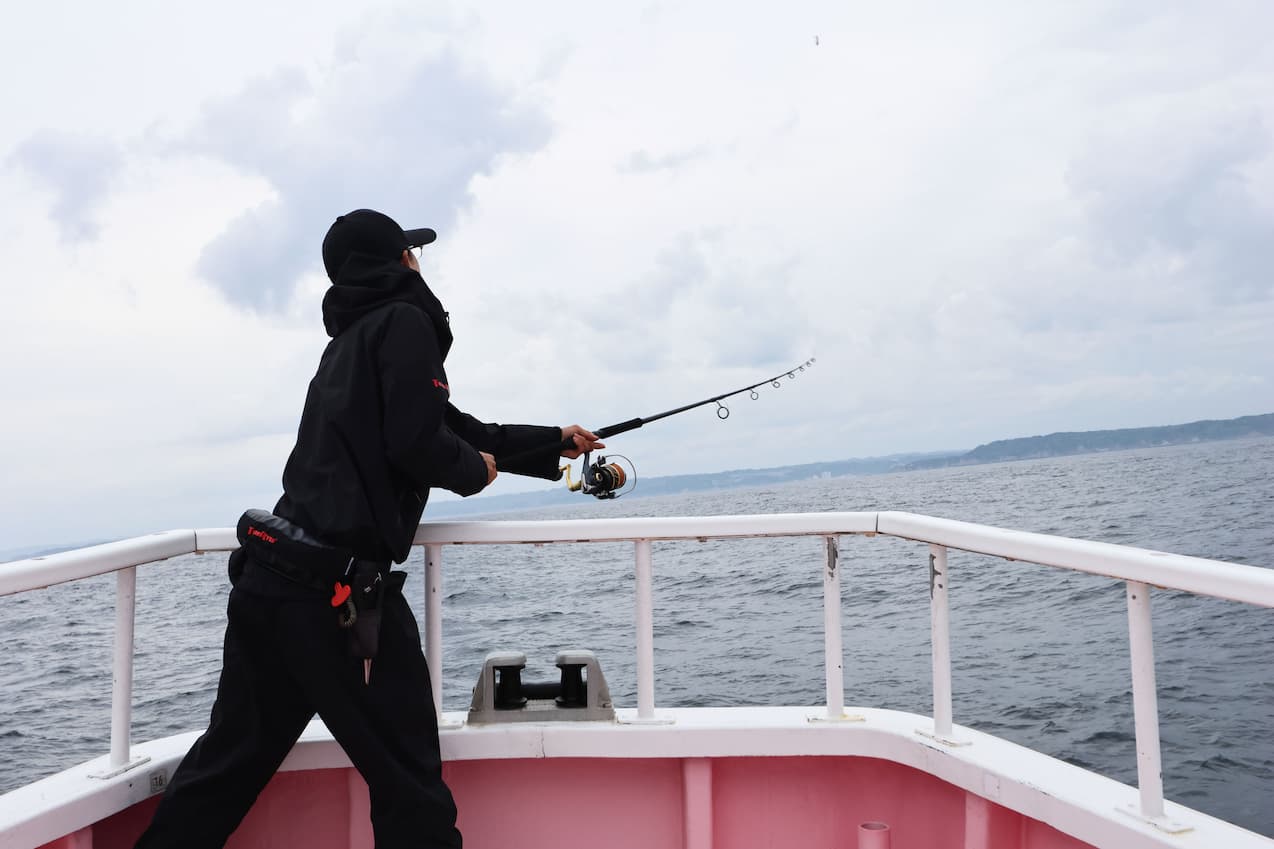
Observe the water surface, tide, and fish activity, listen to the captain’s announcements to pinpoint the fish’s location, and deploy the plug. Simply casting blindly won’t lead to a hit.
A yellowtail caught by reading the situation
In fact, Matsubara’s catch this time was a single fish that he carefully observed, read the situation, and enticed to bite.
“Before the yellowtail hit, the fish started to surface and stir during the drift. In spring, fish sometimes suddenly rise to the surface like this. In areas where the current hits the bottom and the water surface rises, the fish were positioned with their heads facing upstream. I immediately cast there, but there was no bite, so I moved on to the next drift. The captain adjusted the angle slightly to bring the boat back into that area, and the boat drifted toward the 9 o’clock direction. Within that, I saw fish at the 11 o’clock direction and cast there. However, this cast did not result in a bite. On the next cast, the school of fish had passed the bow of the boat, and I confirmed that the front of the school was at the 1 o’clock direction. Despite the headwind, I made a sharp cast and put the lure in. However, fish that are floating like this are finicky and don’t bite easily. I had the impression that a regular long jerk wouldn’t work, so I wanted to trigger a reaction bite. When I made a sharp, short jerk, it hit.
The basic jerking motion for enticing fish during casting, as demonstrated by Mr. Matsubara, involves moving the rod about 1 meter and retrieving the line with one turn of the handle. However, if the fish follows the lure during such enticement, he adds subtle enticement. The fish either quickly escapes or twitches in place. The hit in this case also involved such movement.
When the angler, captain, and sea align, good results follow. And a fish caught through such reading brings greater satisfaction. In the Sotobou region, anglers on charter boats must use their reading skills and techniques to entice the fish, and capitalize on the few opportunities that arise. This requires proper tackle preparation suited to the Sotobou region, concentration, and the determination to catch fish.
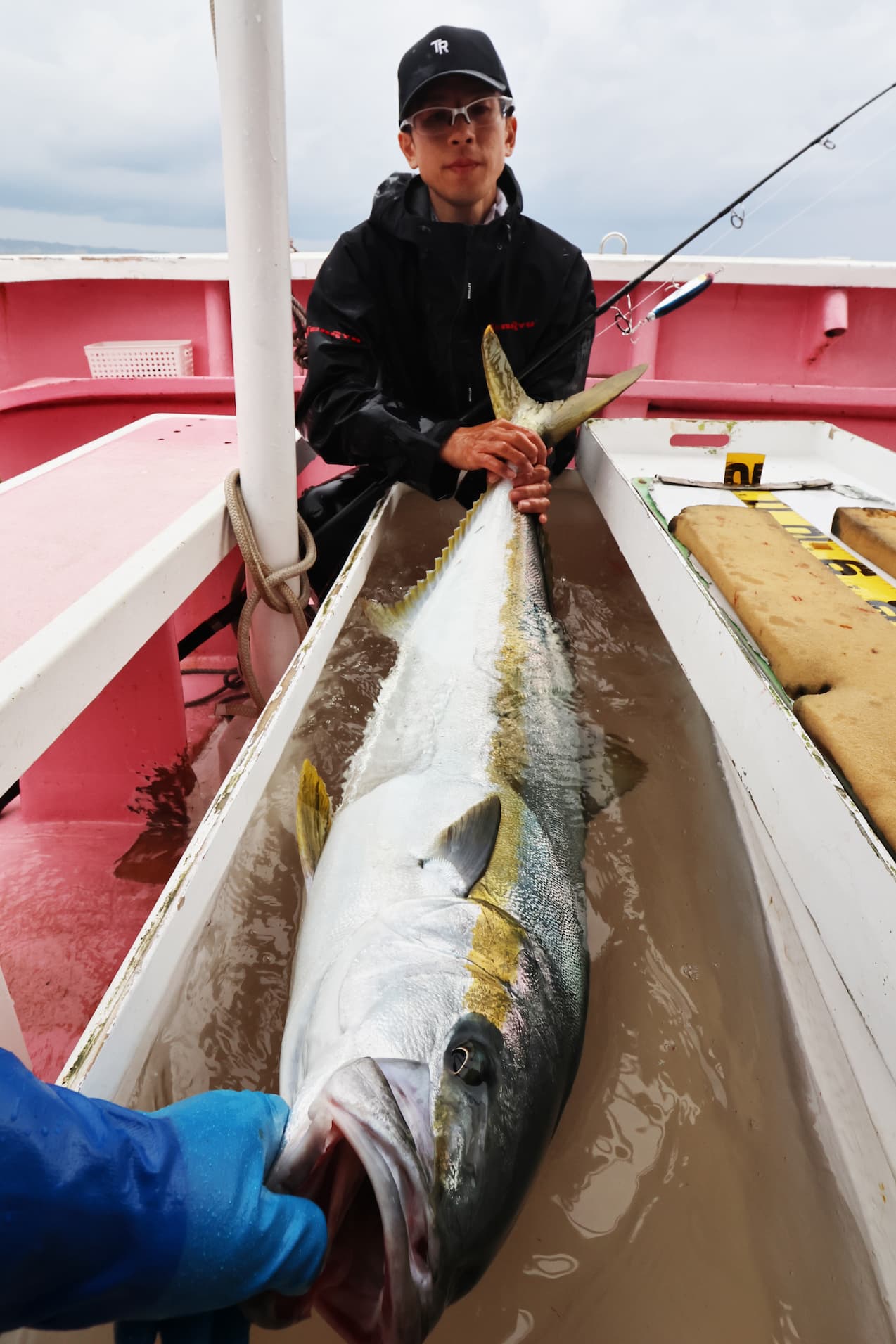
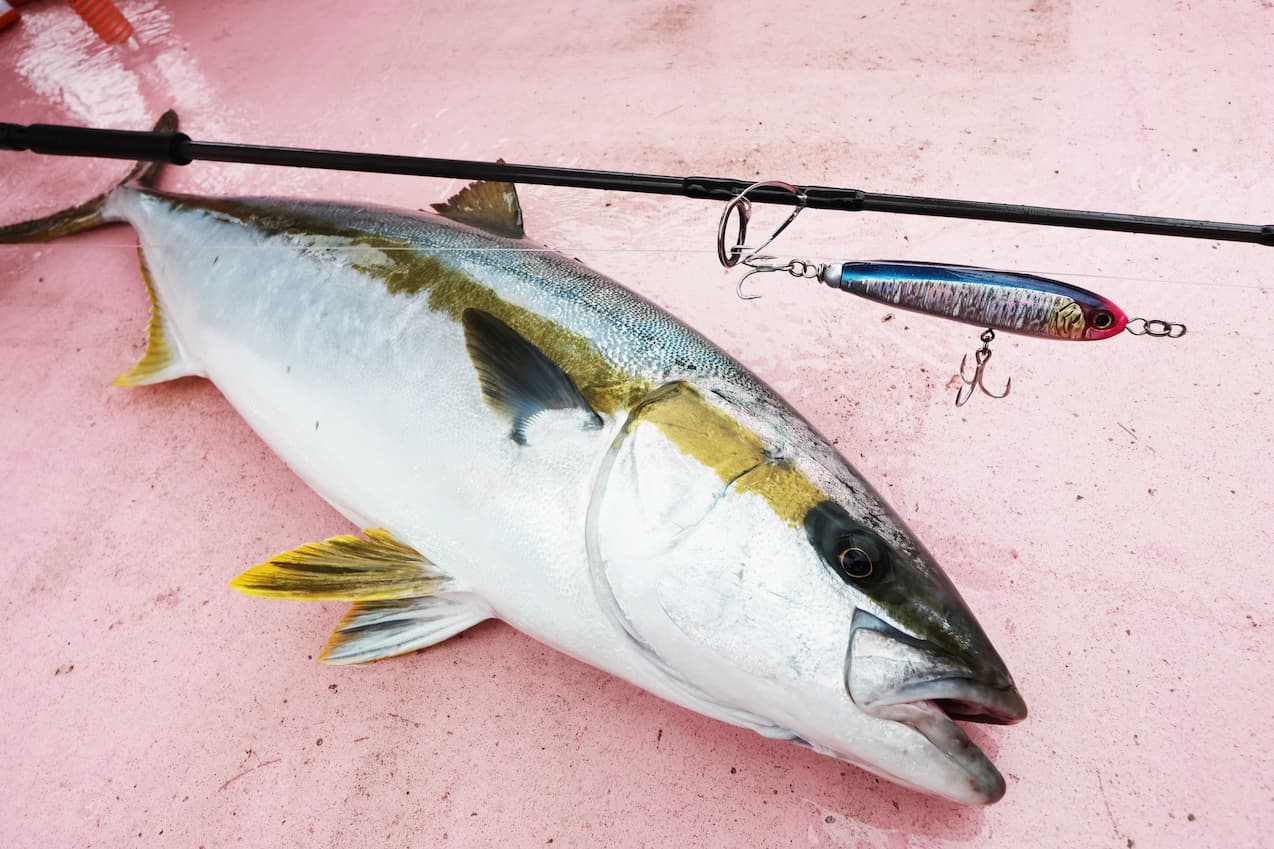

Product Information
TENRYU
https://fishing.tenryu-magna.com/
MASHIO
https://mashio.base.shop/
【Fishing Boat】Yamashoumaru
http://www.yamashomaru.jp/


